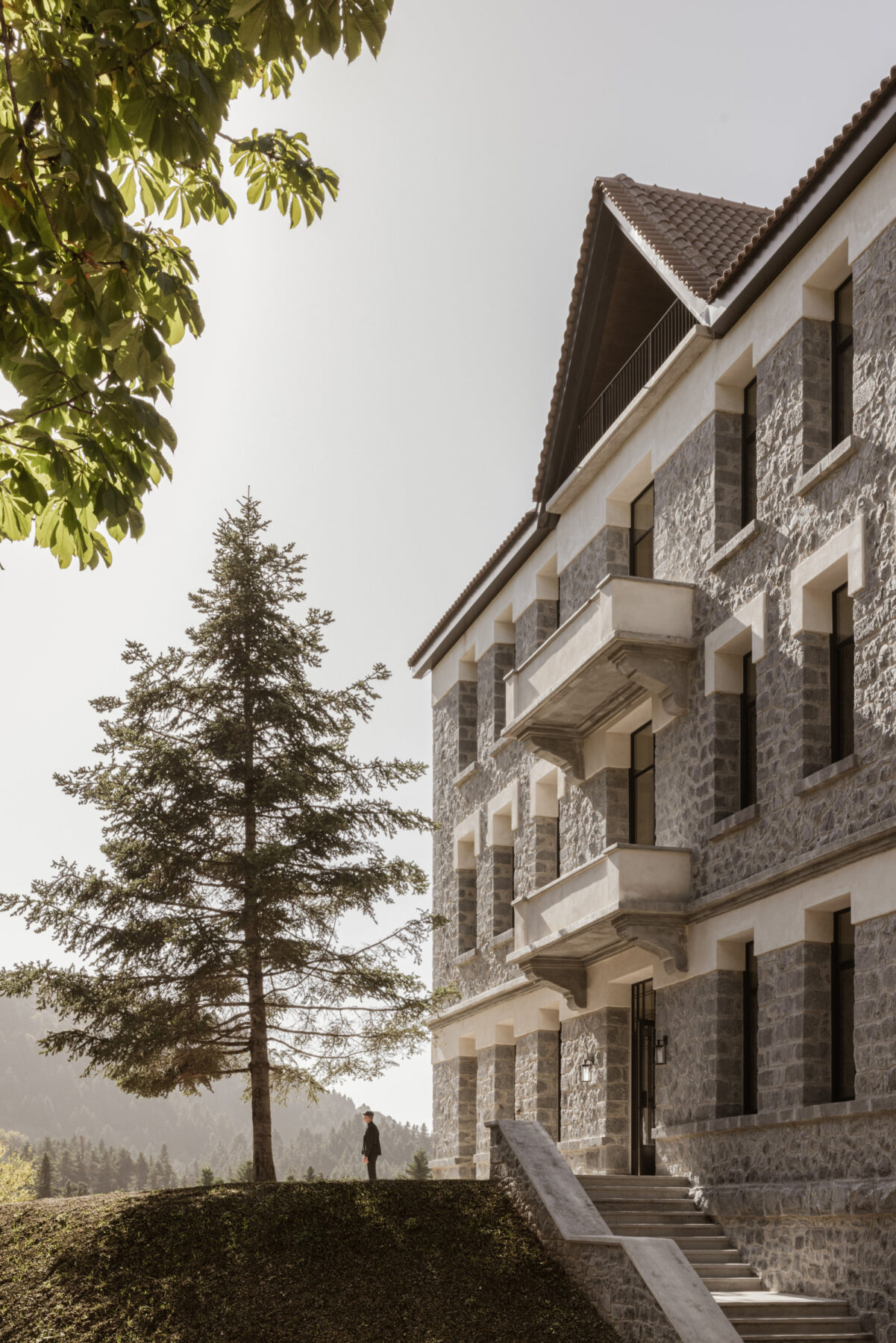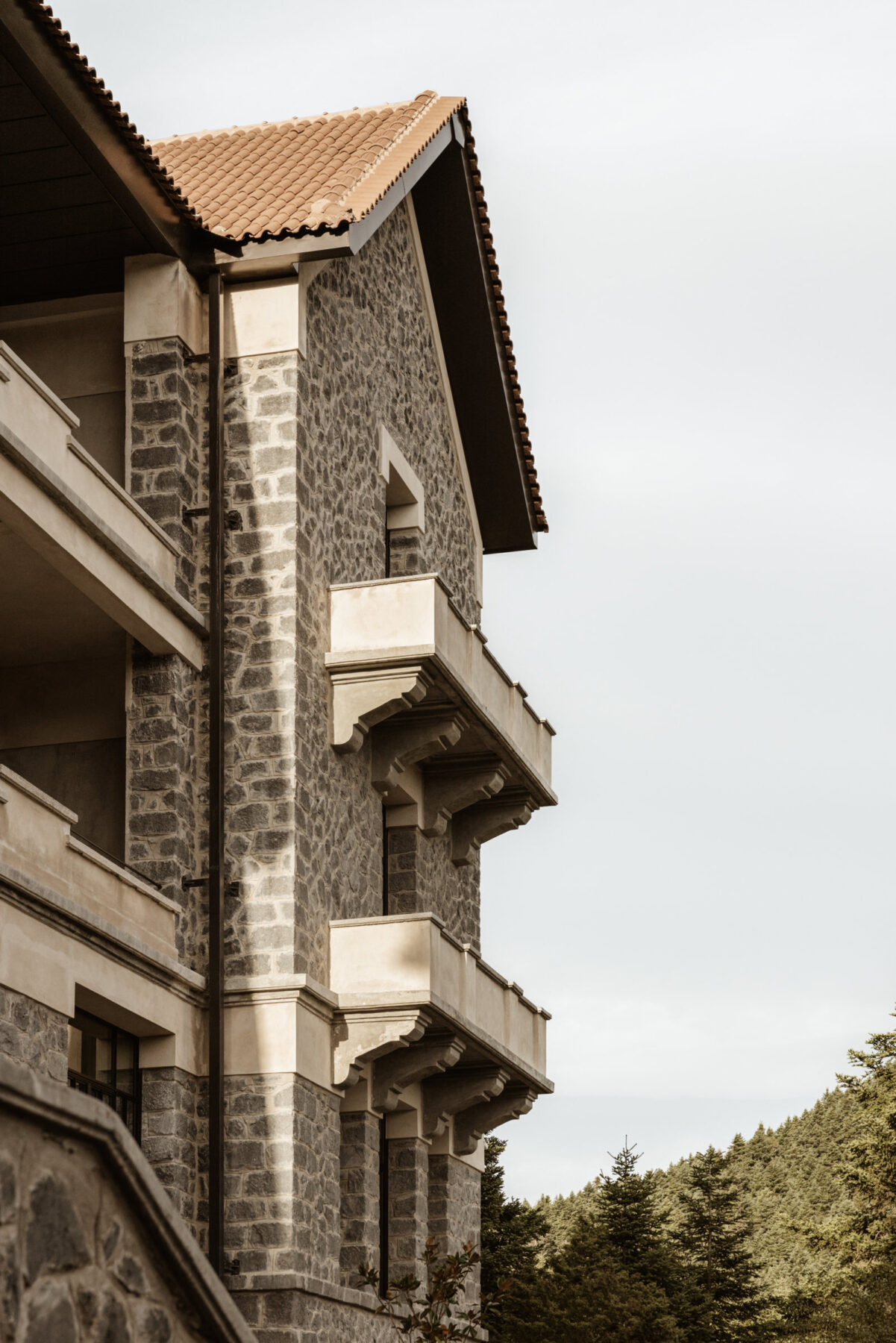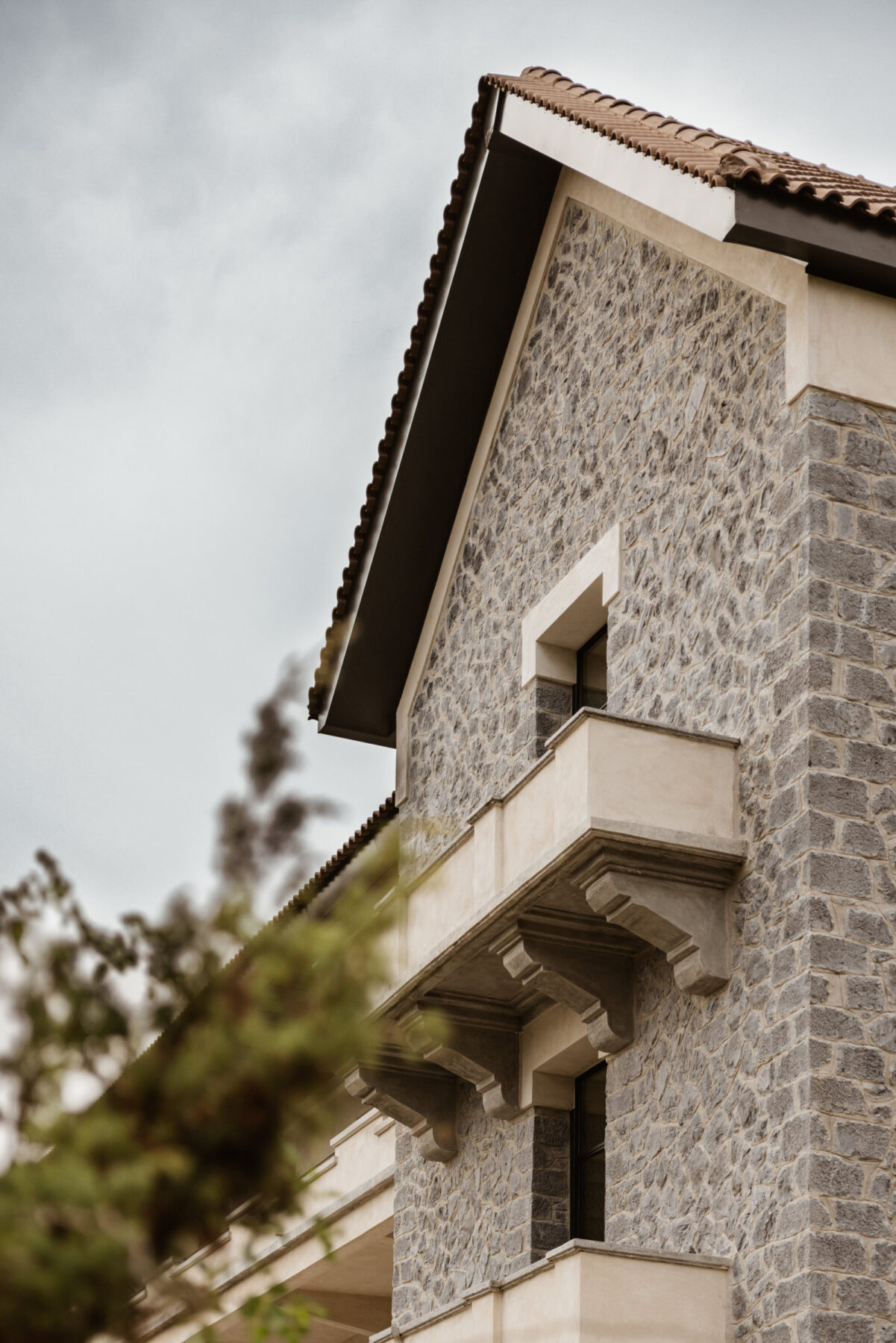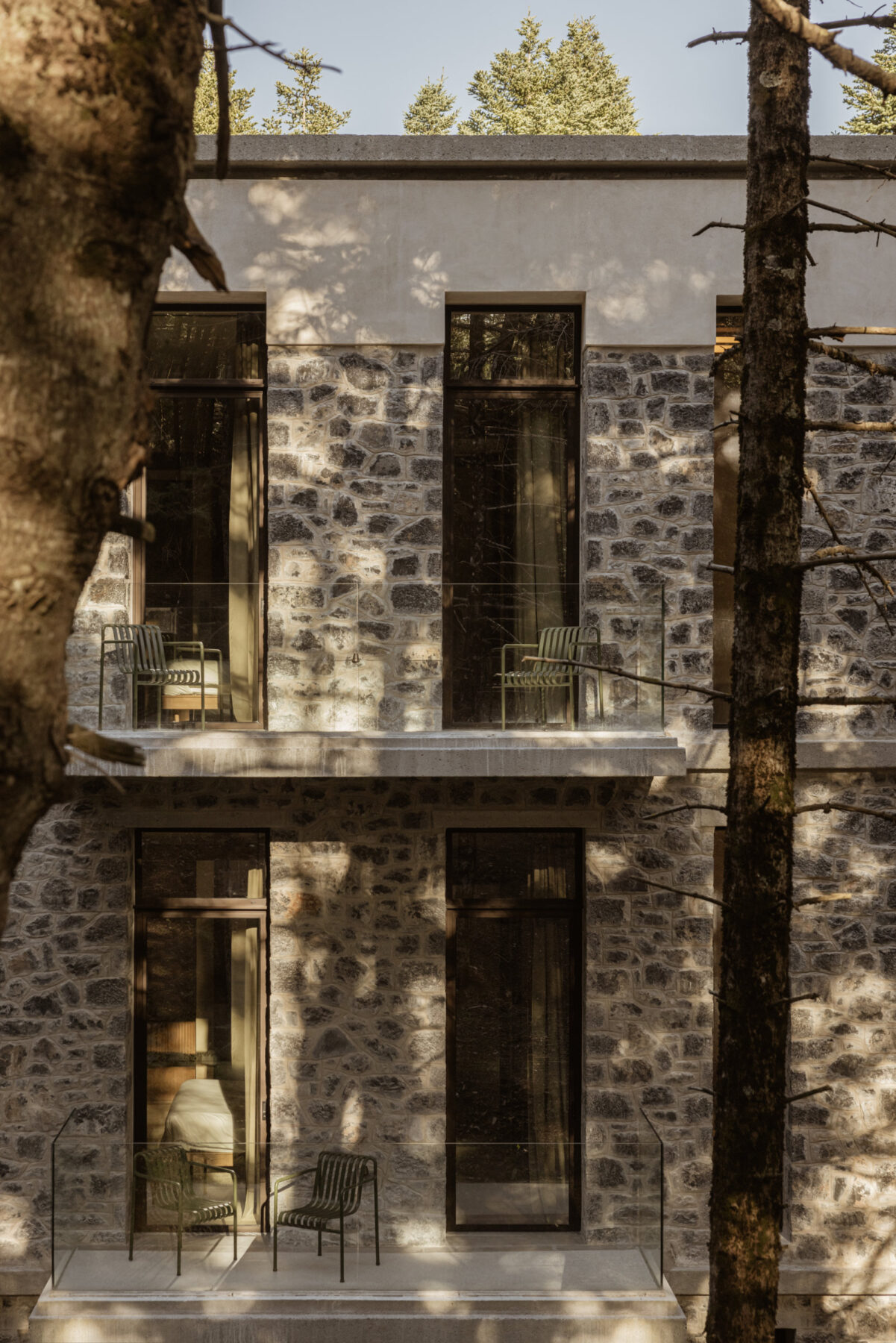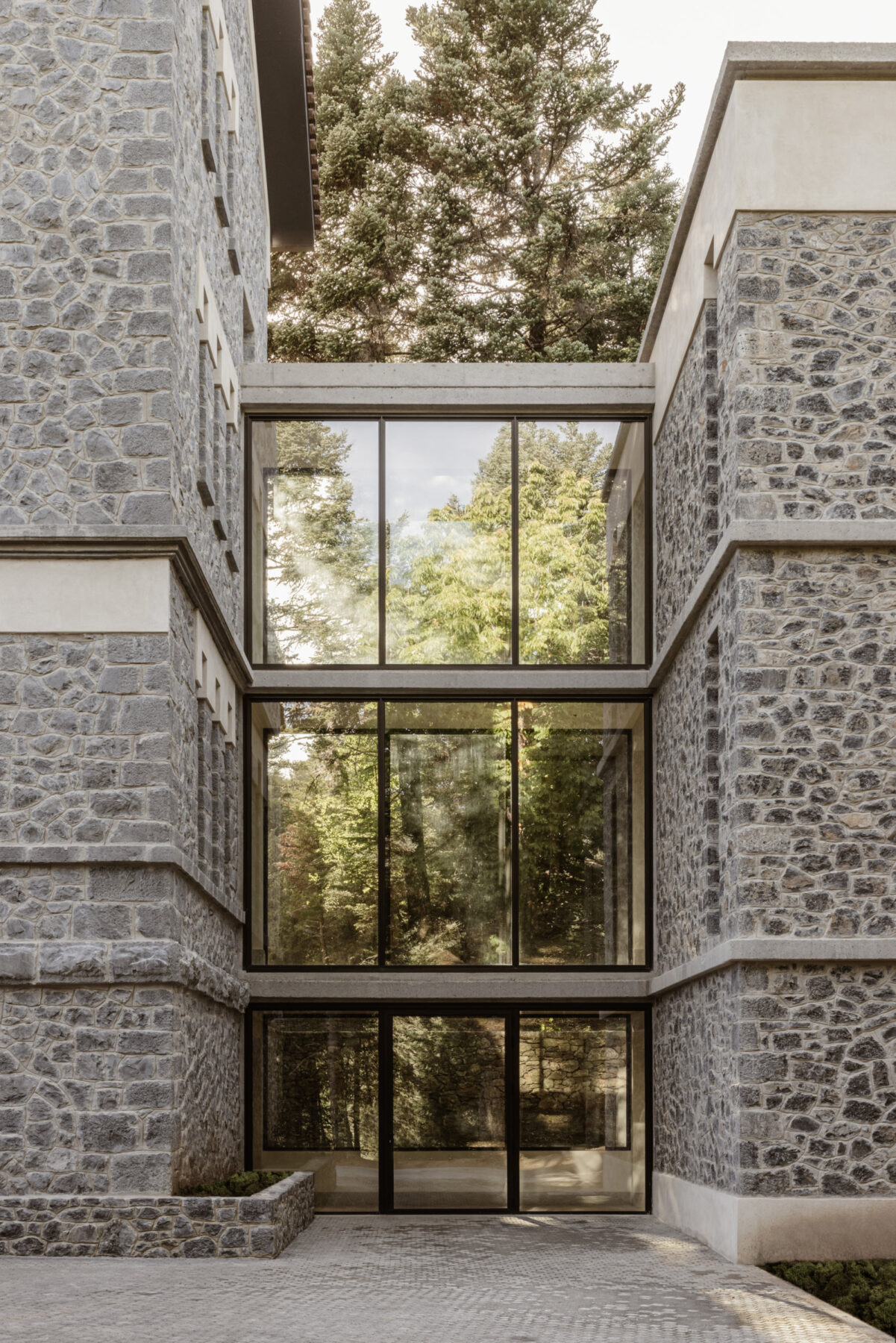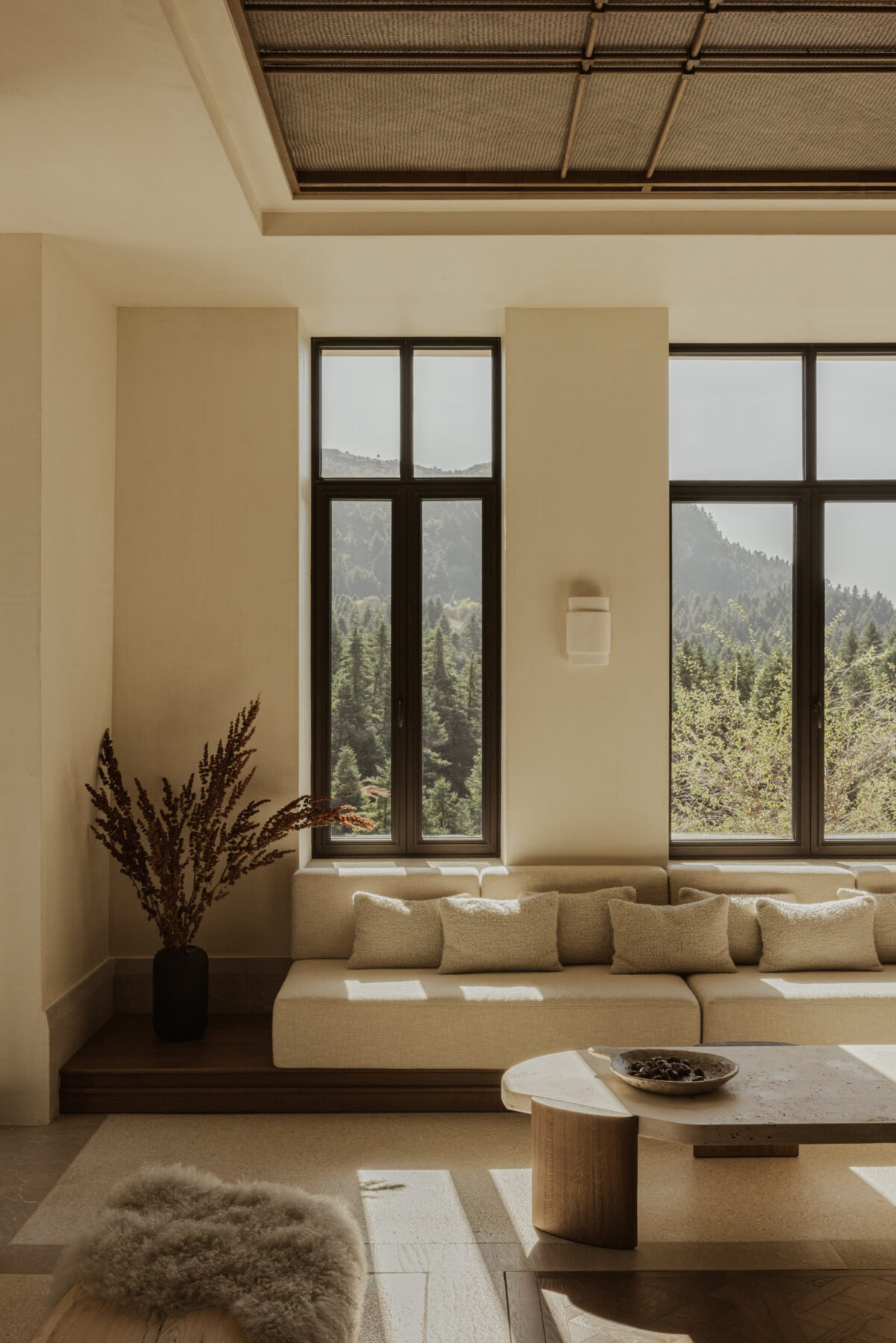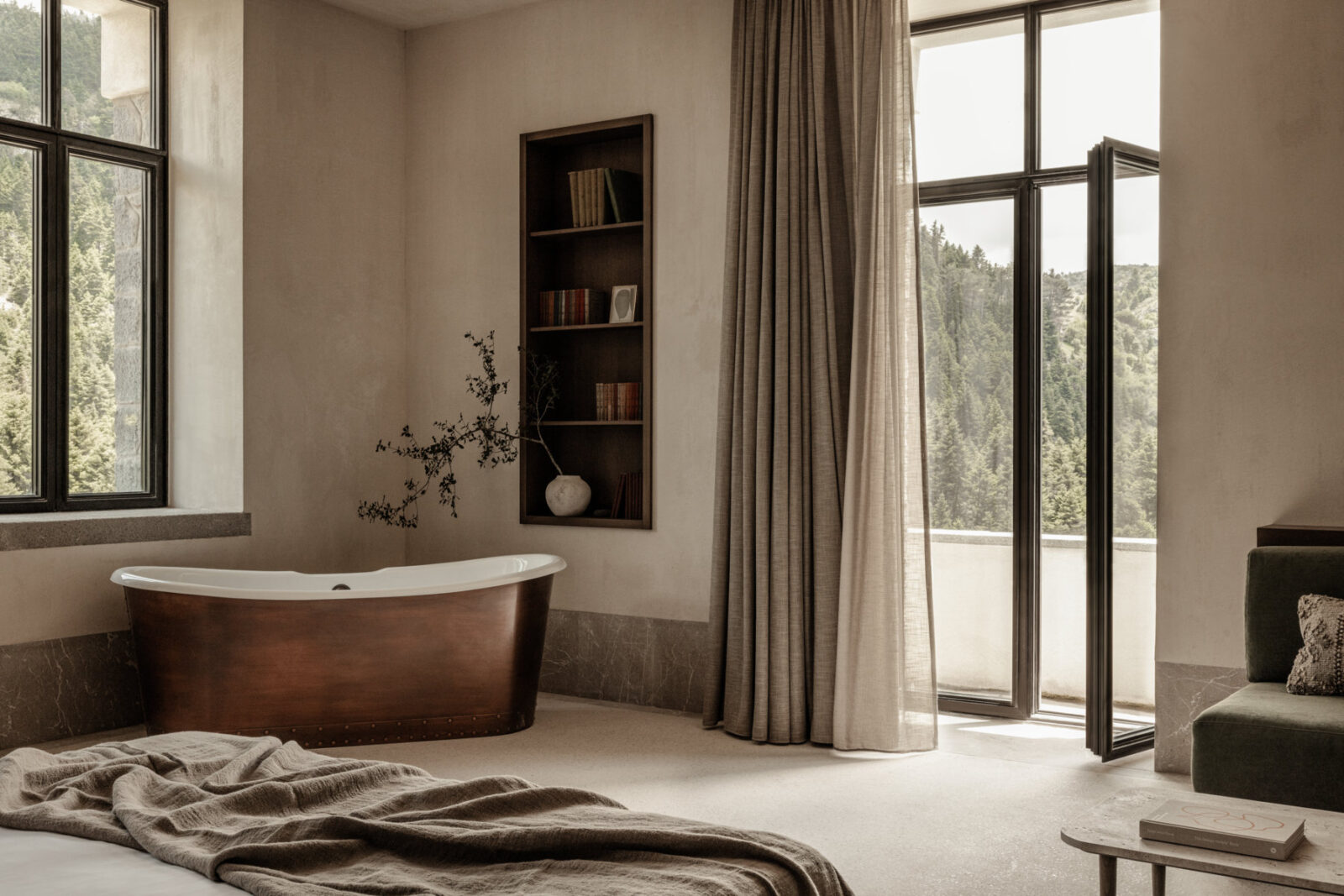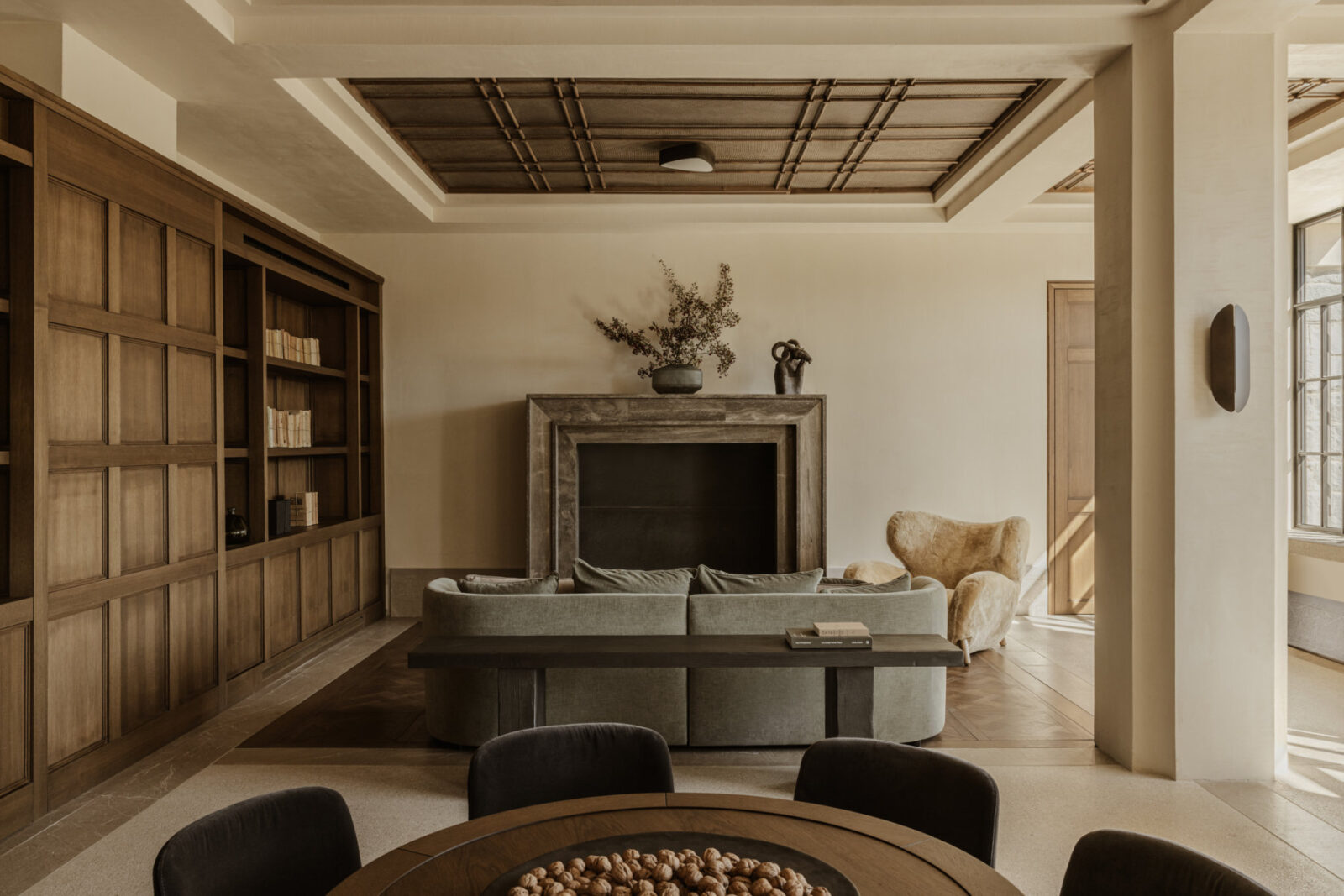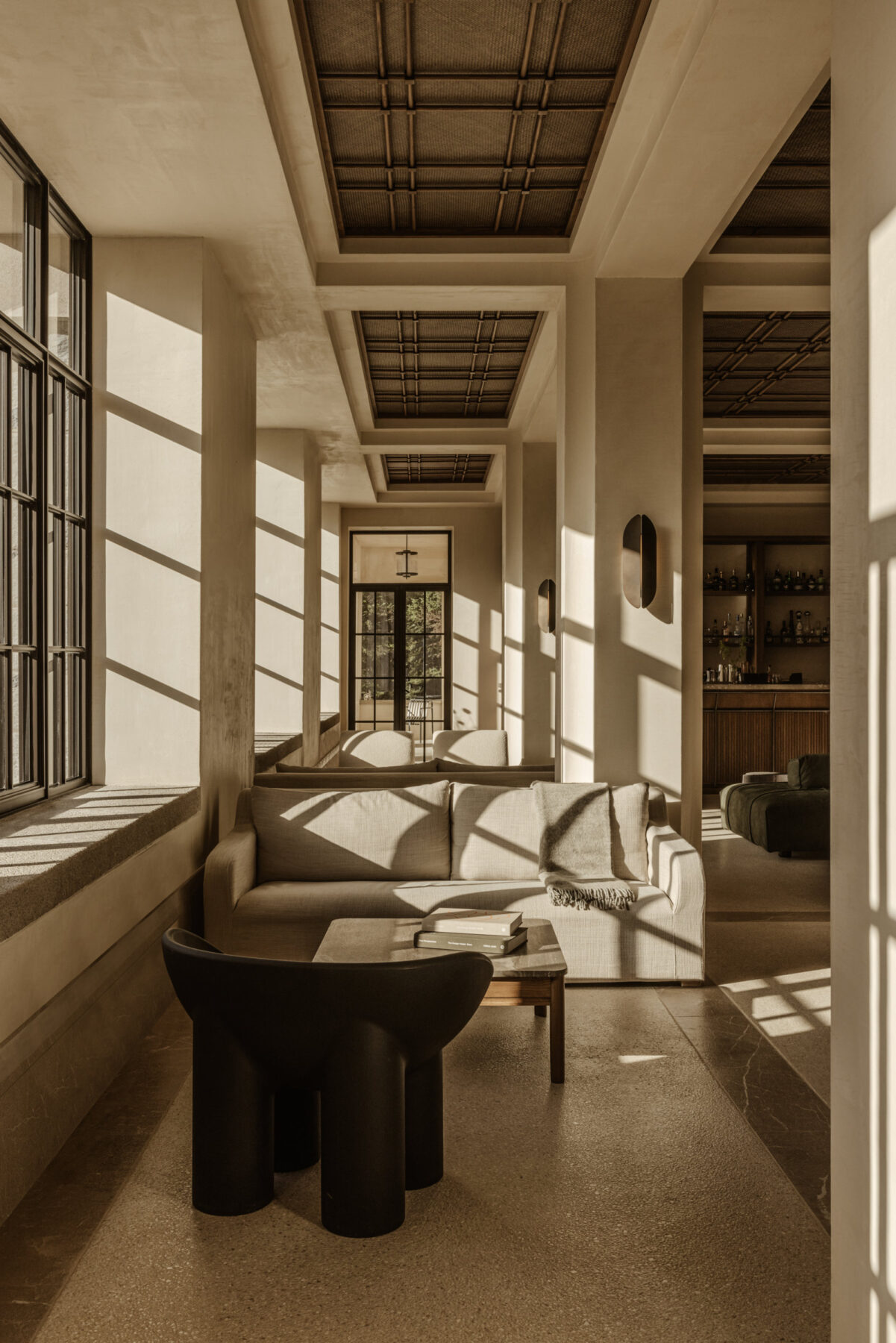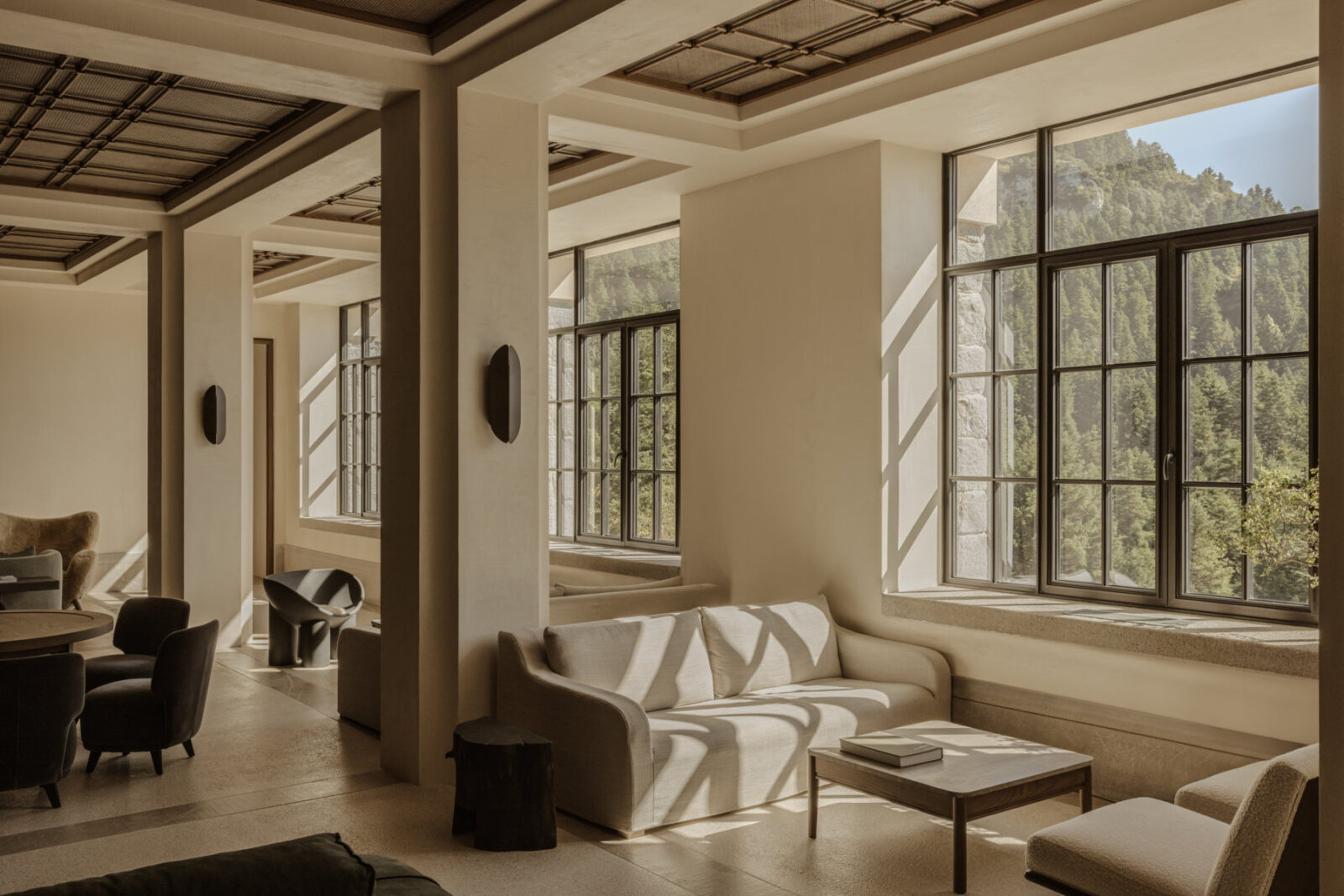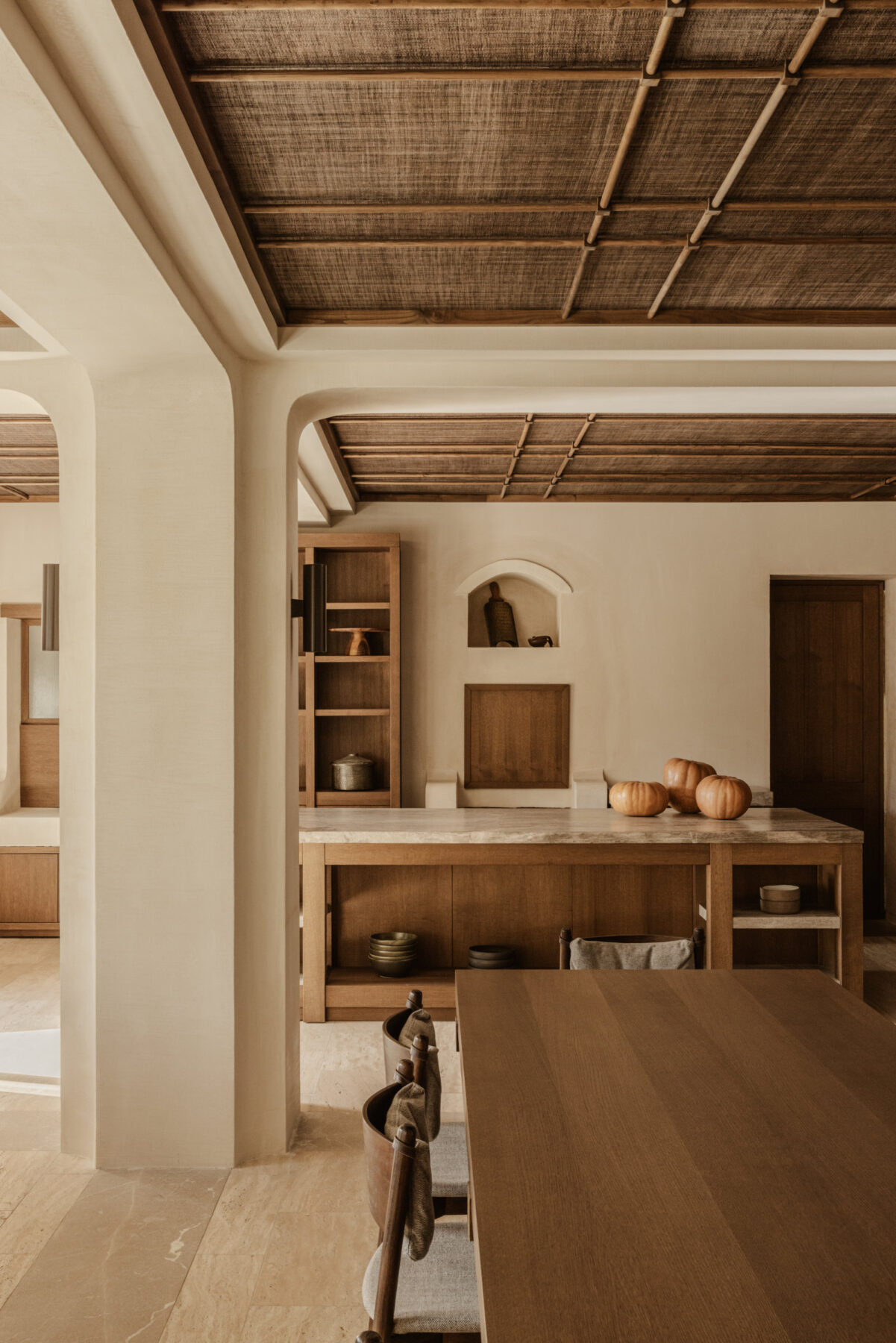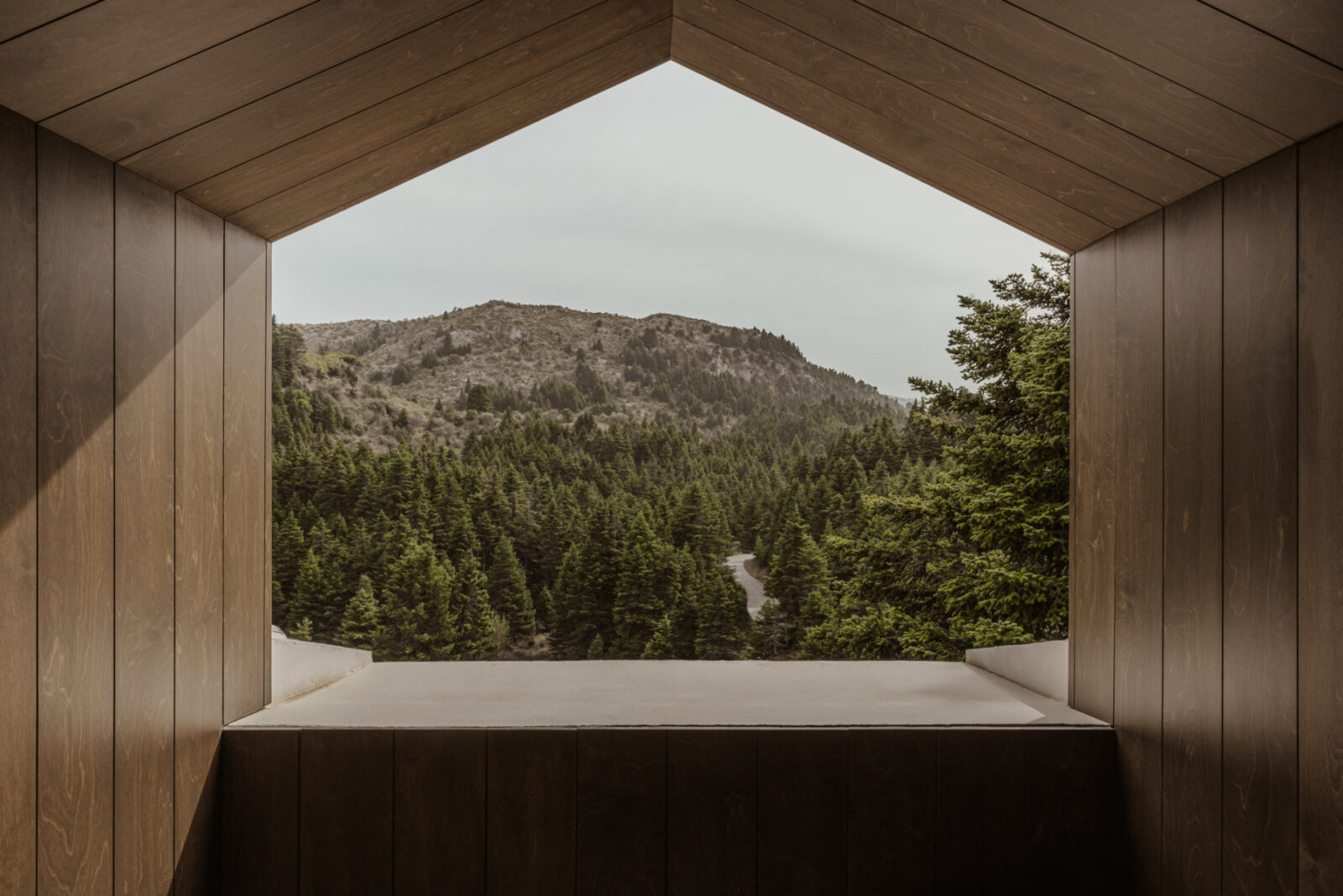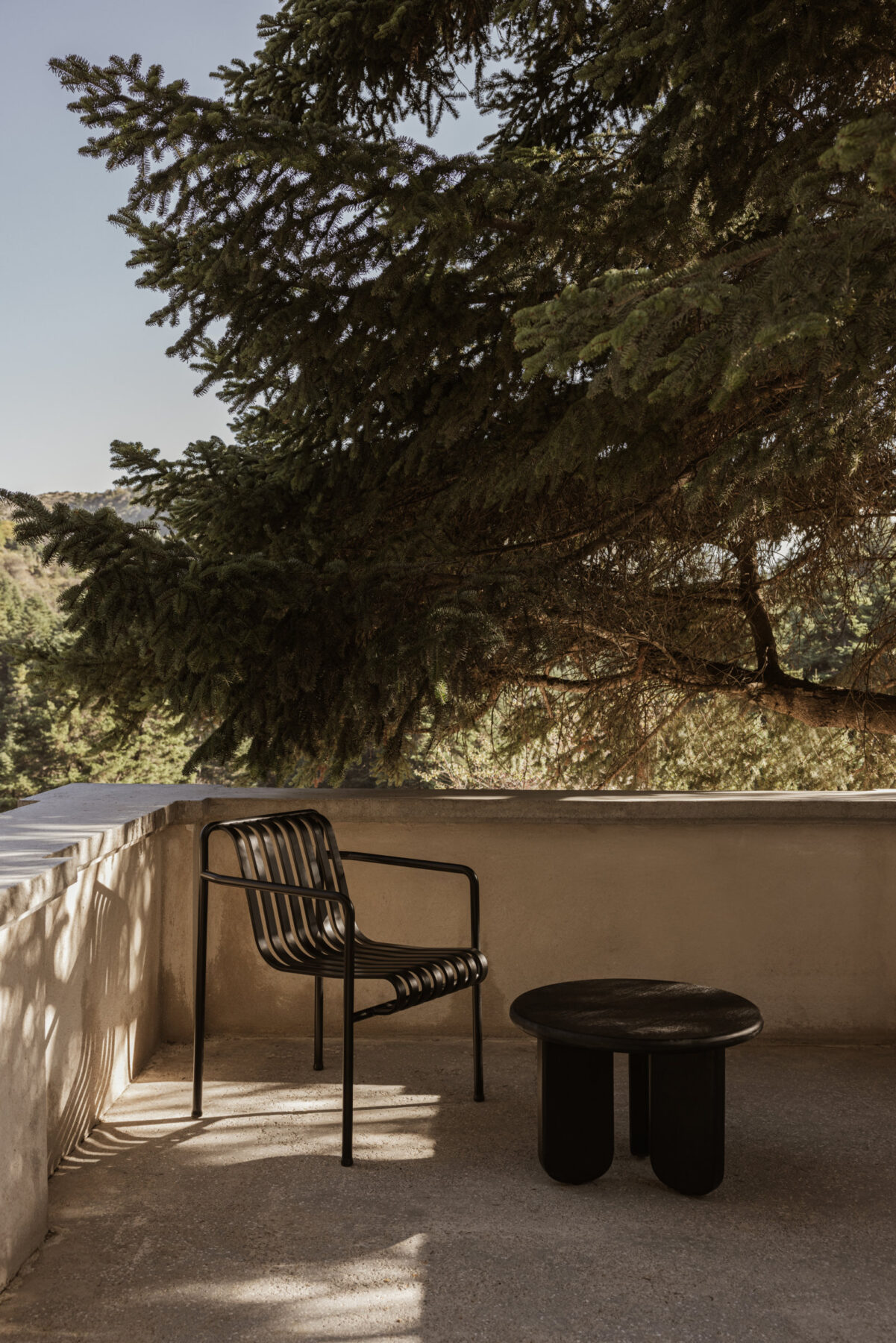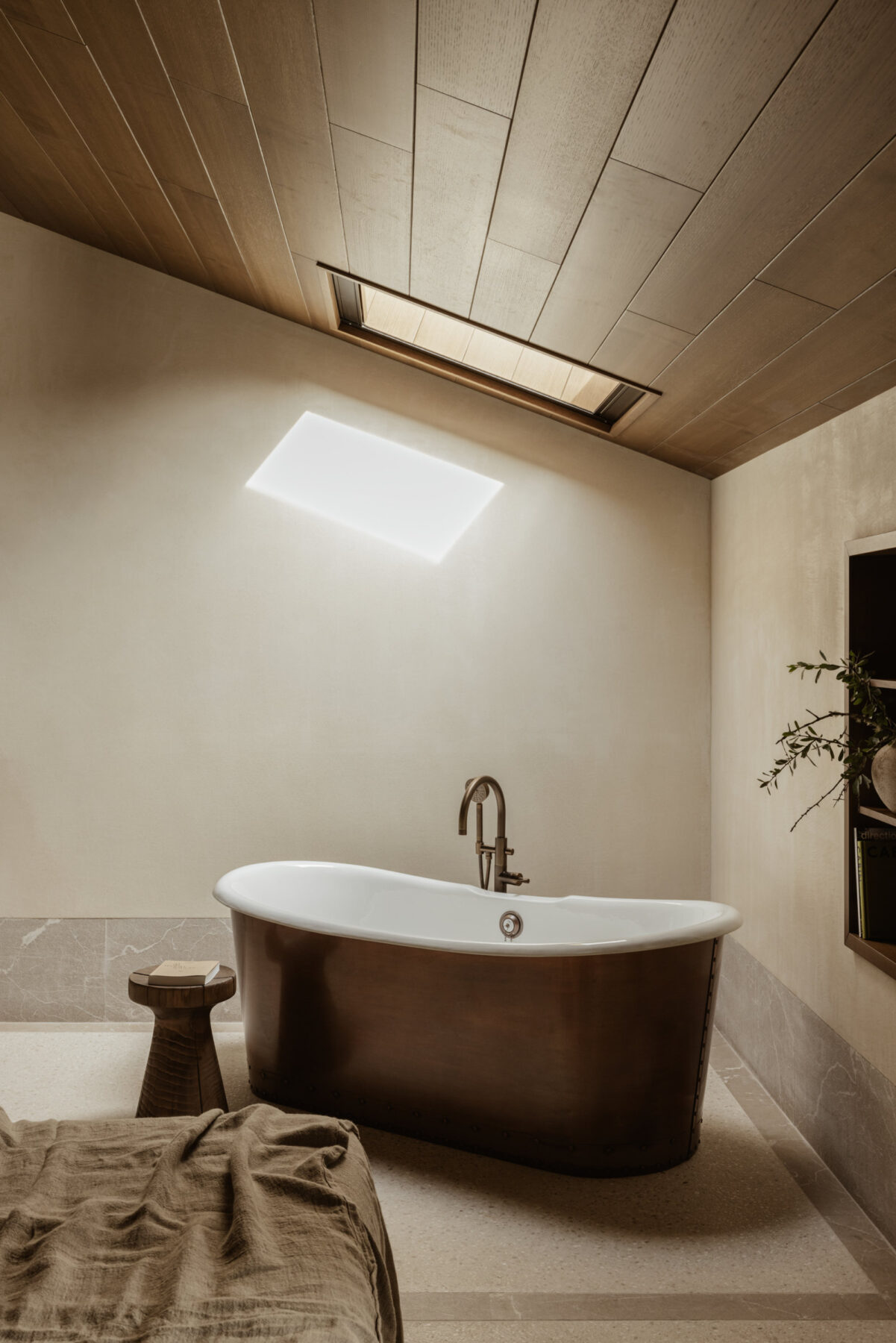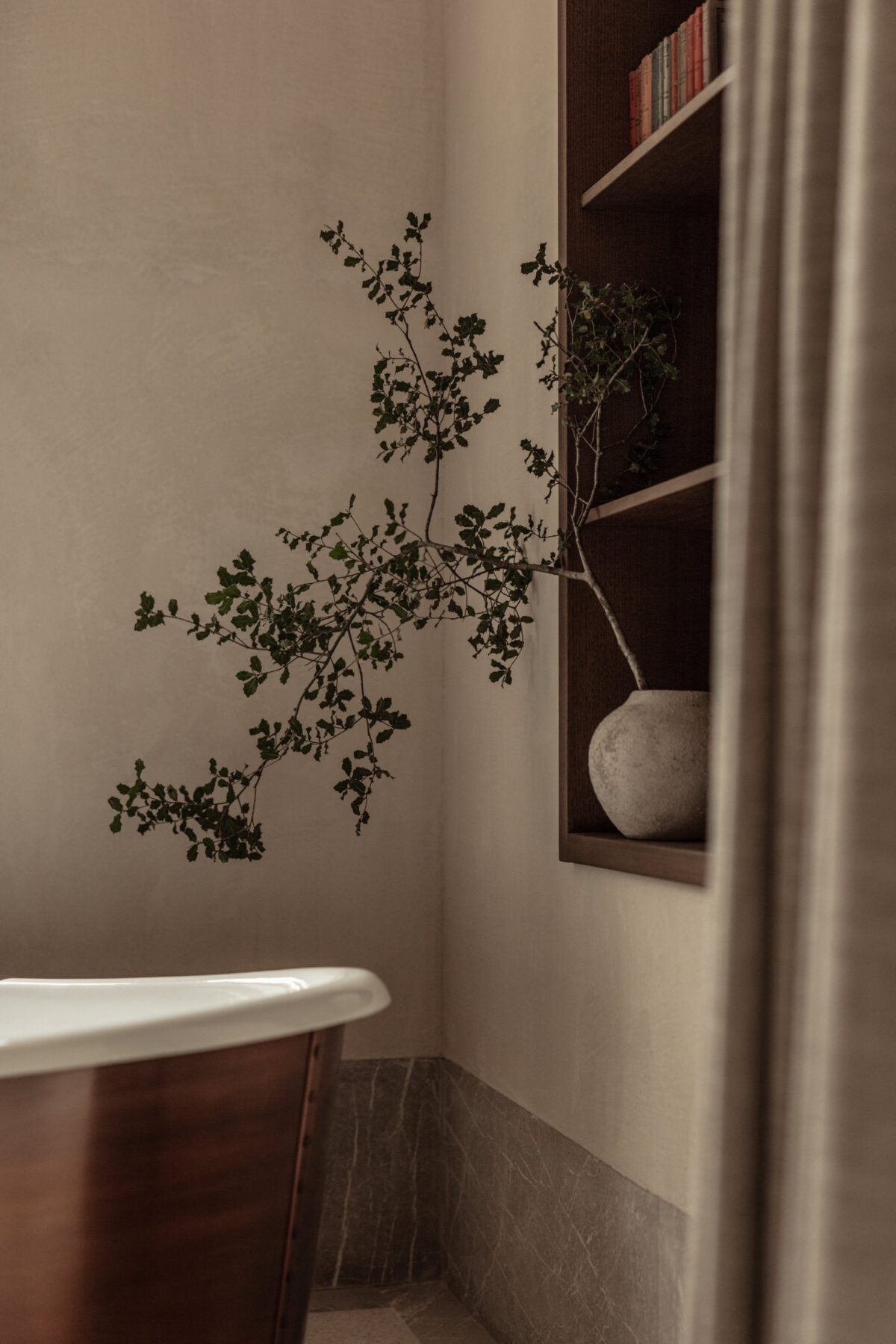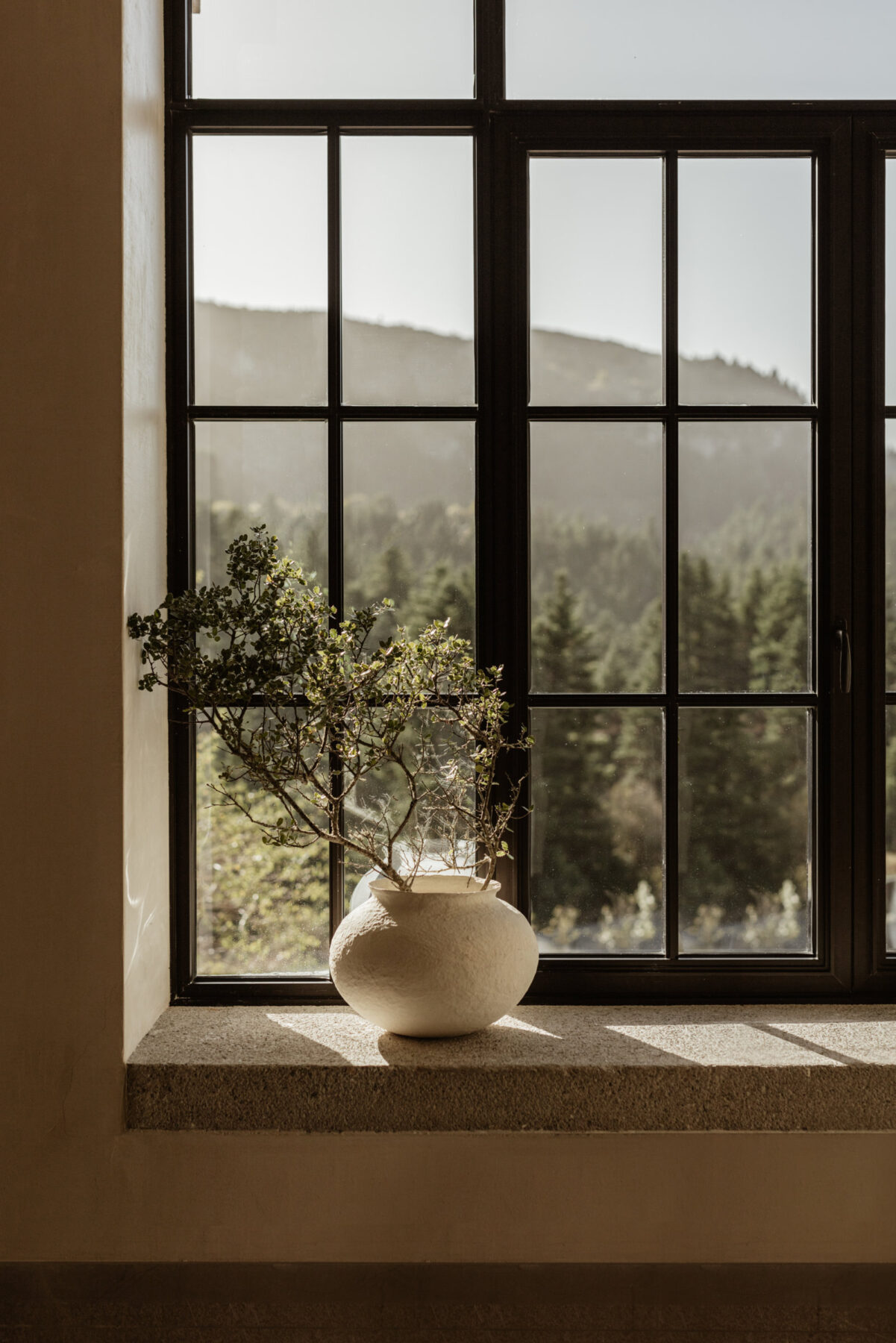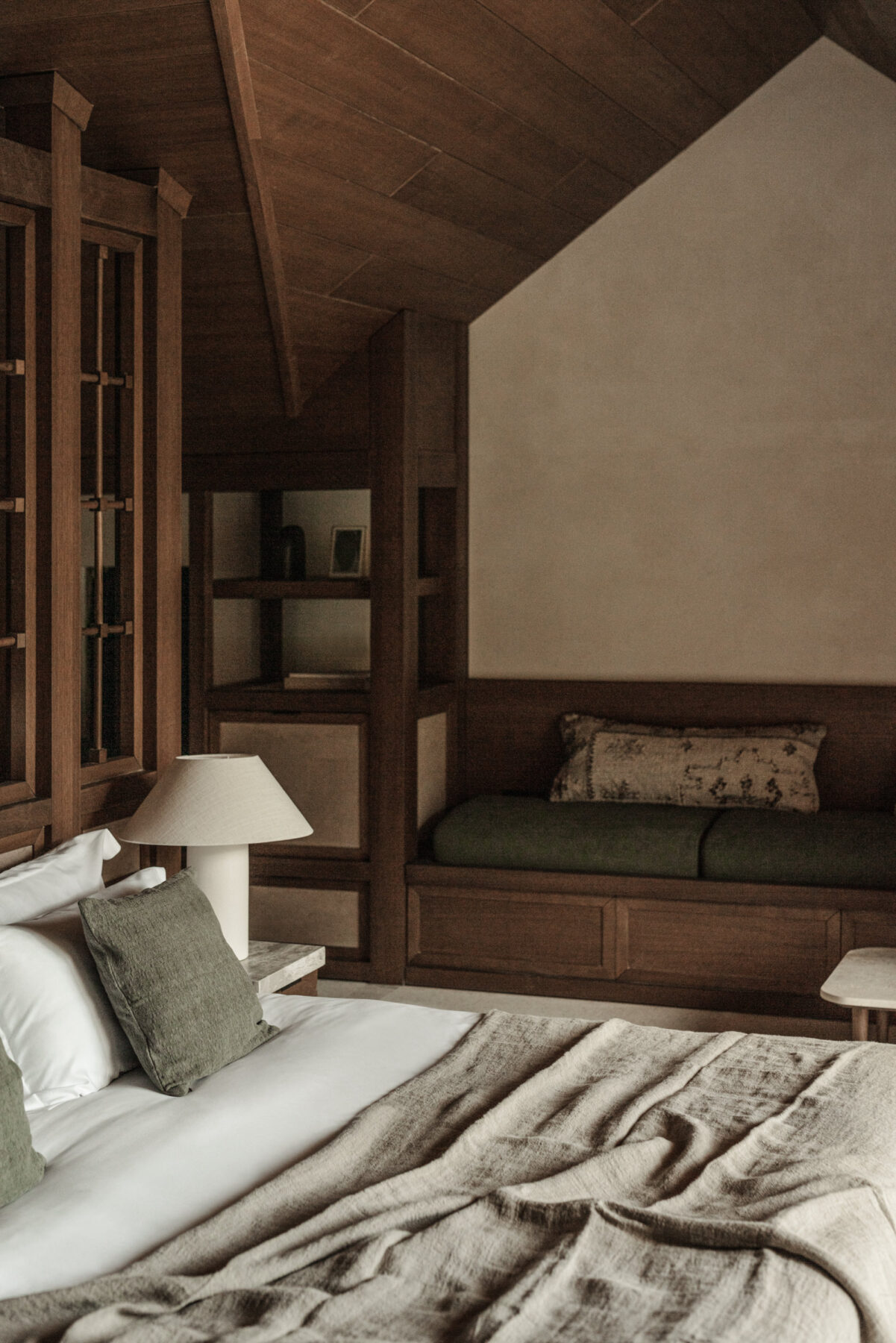Originally built in the late 1920s, the Manna Sanatorium received patients of tuberculosis who hoped to heal from the benefits of living within the arcadic woods for almost a decade. Designed by Swiss architects, it stirred away from the neoclassical current of the moment in the area. Despite the idyllic location, the introduction of penicillin in 1938 made sanatoriums obsolete, forcing the abandonment of Manna at the mercy of looting, with its parts being repurposed in nearby constructions. In order to revive the property, redefining the very same concepts of hospitality, wellness and retreat that made it ideal in its first life cycle, K-Studio & Monogon had to look through a contemporary prism that would make Manna a modern sanctuary and a destination in itself.
The secluded location, the unspoilt natural surroundings combined with the emblematic architecture of a lost era, inspired us to translate this vision into an optimistic and respectful continuity of its long history.
Breathing new life into the walls and bridging a century-long gap without sacrificing the original identity of the building requires sticking to its roots and projecting towards a contemporary approach to an ancient concept. With a series of surgical interventions, we attempted to showcase the monumental heritage of the building stock, in order to connect deeply to those roots and purity of the locus.
Upon arrival, guests are greeted in the welcome area, a cosy space where local treats & a warm drink by the robust fireplace give a first taste of a down-to-earth hospitality experience. Moving to the Lounge area, where dominant is the Bar that makes a clear reference to the healing past of the property thanks to its apothecary style with the complex joinery, the sense of community is rather clear, as activities populate the space in an organic way.
In the lower level an open Kitchen is conceived to invite guests to participate in the elaboration of meals that will be served in the restaurant, and which may also spill over in the outdoors areas when the weather allows it. On its lower level, the annex features all the wellness areas, from the gym all the way to different spa amenities, that end up becoming a cave into the terrain, exploring further the pure spatial qualities of being grounded.
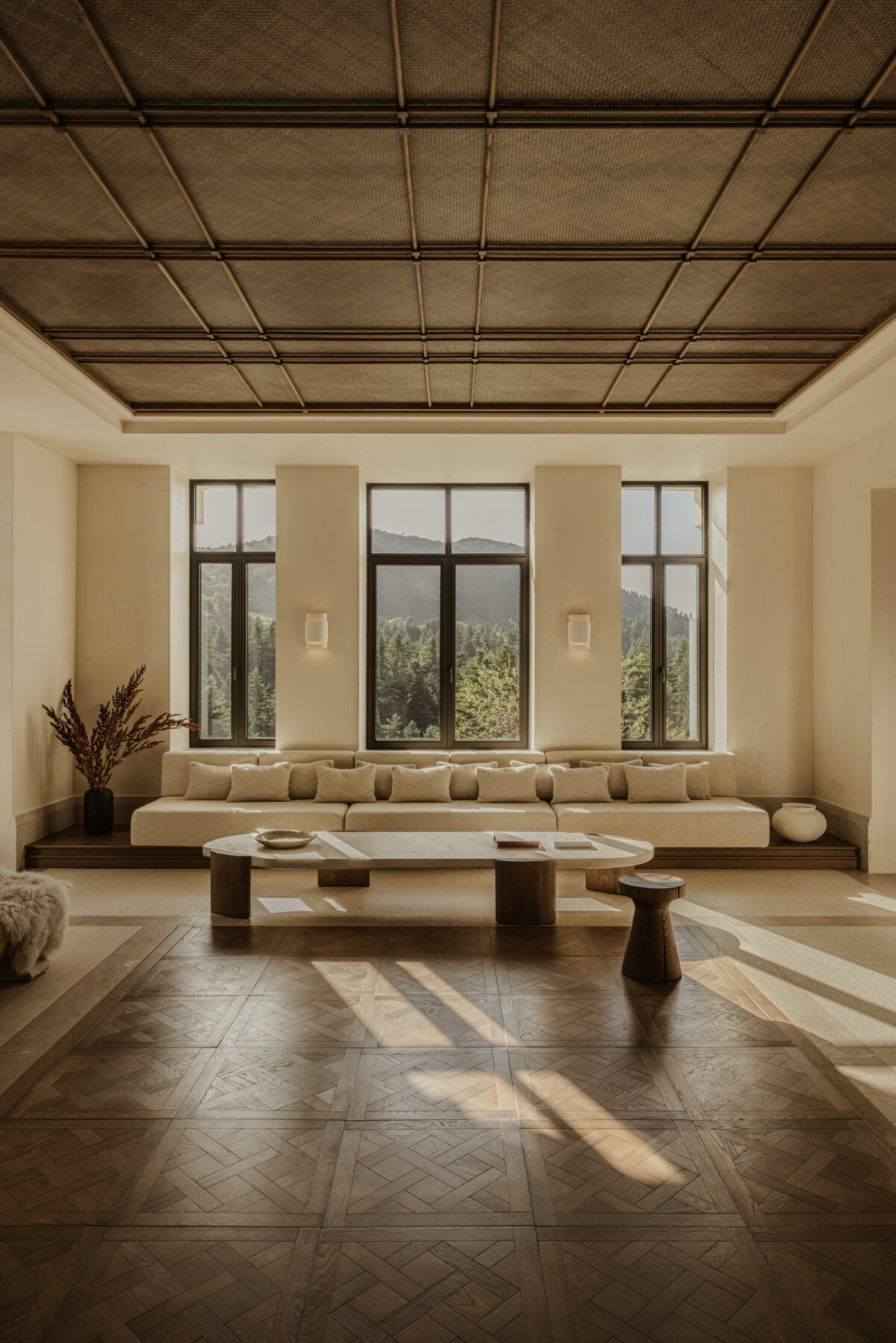
Inside each of the 32 rooms, a timber space grid of brushed treated timber is reflected on the floor patterns of terrazzo and marble to organise and define sub-areas of sleep, bathing, dressing etc. The grid feature is a heritage from signature original elements, like the iron doors with their exquisite detailing in their muntins, and reappears in floor patterns all over the building.
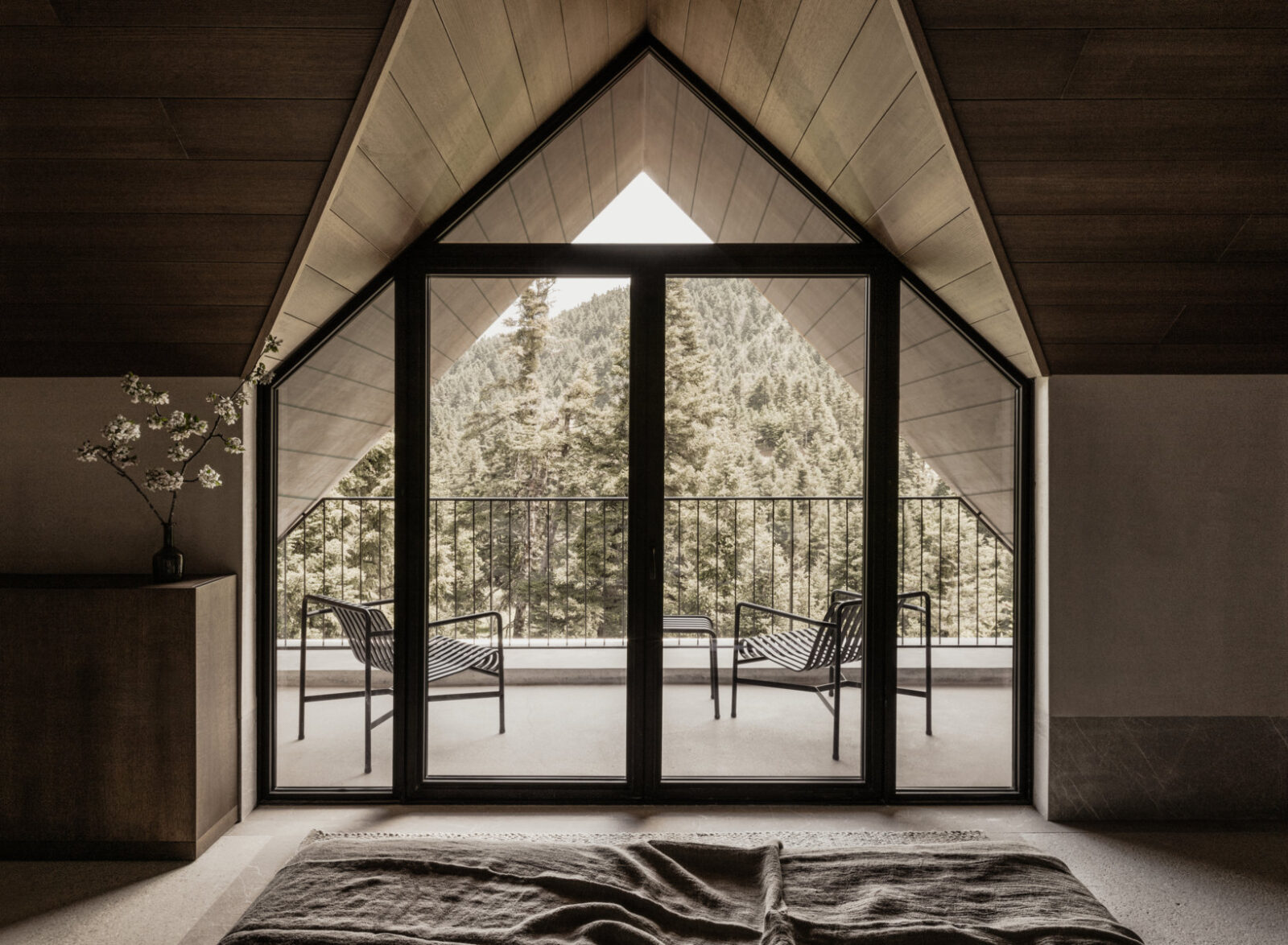
Key to the revival of Manna is the subtle reinvention of its material palette.
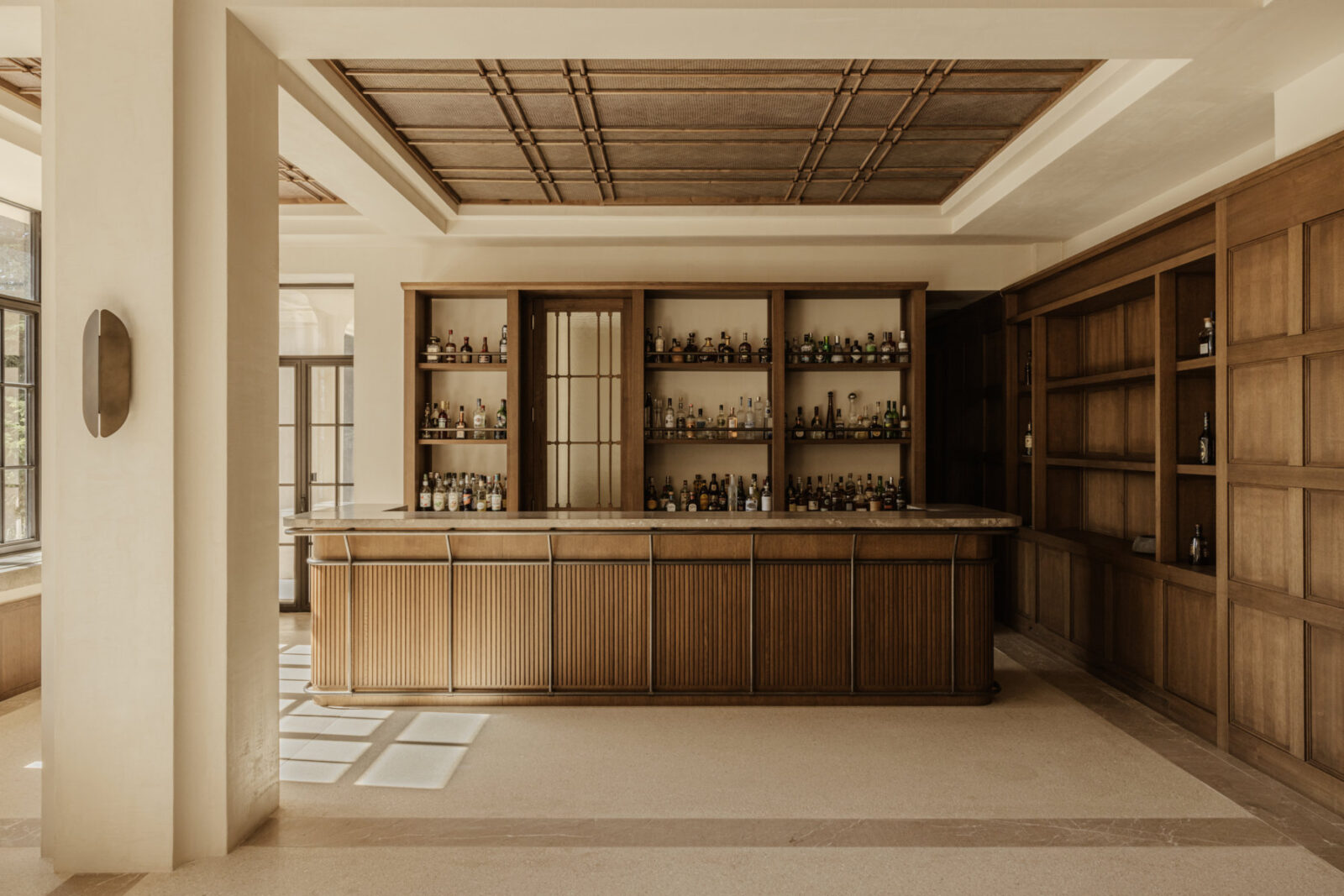
Extra care was given in maintaining, continuing and repurposing material stock, with the selection of natural finishes in flat or textured renders for interior and exterior walls, the replacement of the severely damaged terrazzo floors with similar mixtures of locally sourced gravel and of stone floors on the ground levels of dining & spa areas, as well as thresholds and sills.
There was also economy in the material finishes that were largely sourced from nearby: stone elements and terrazzo were all accessible from mines of the area, chestnut panels were directly brought from the woods. Metal muntin windows compliment the palette on the envelope, while natural finishes and vegan leathers that age gracefully will show off the beauty of natural processes. Manna aspires to establish itself as a timeless sanctuary where one gets lost only to find oneself again.
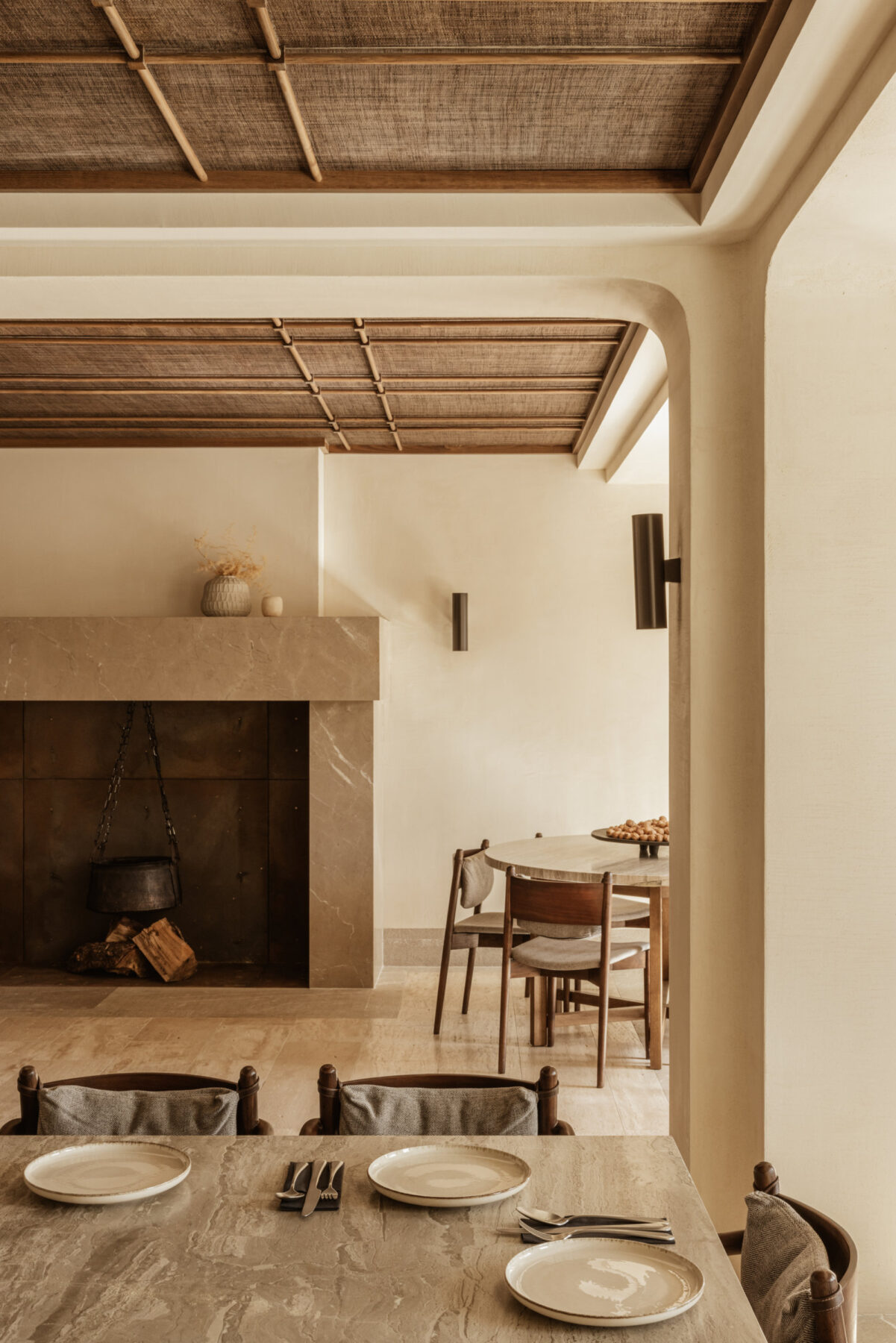
Breeding a strong sense of community in the gathering spaces, preserving the impression of the lost sanatorium where healing took place in isolation, space for connection to oneself is paramount.
Grande common spaces and secluded areas coexist to allow for opening up to the community, or closing up for introspection.
The F&B venue and the spa aspire to become standalone attractions, with the contribution of renowned specialists who know how to elevate the everyday habits into rituals, while the inevitable contact with the arcadic landscape will be enhanced with the arrival of additional tracks for hikes and other outdoors activities in a mapped territory specifically reserved for a fuller experience.
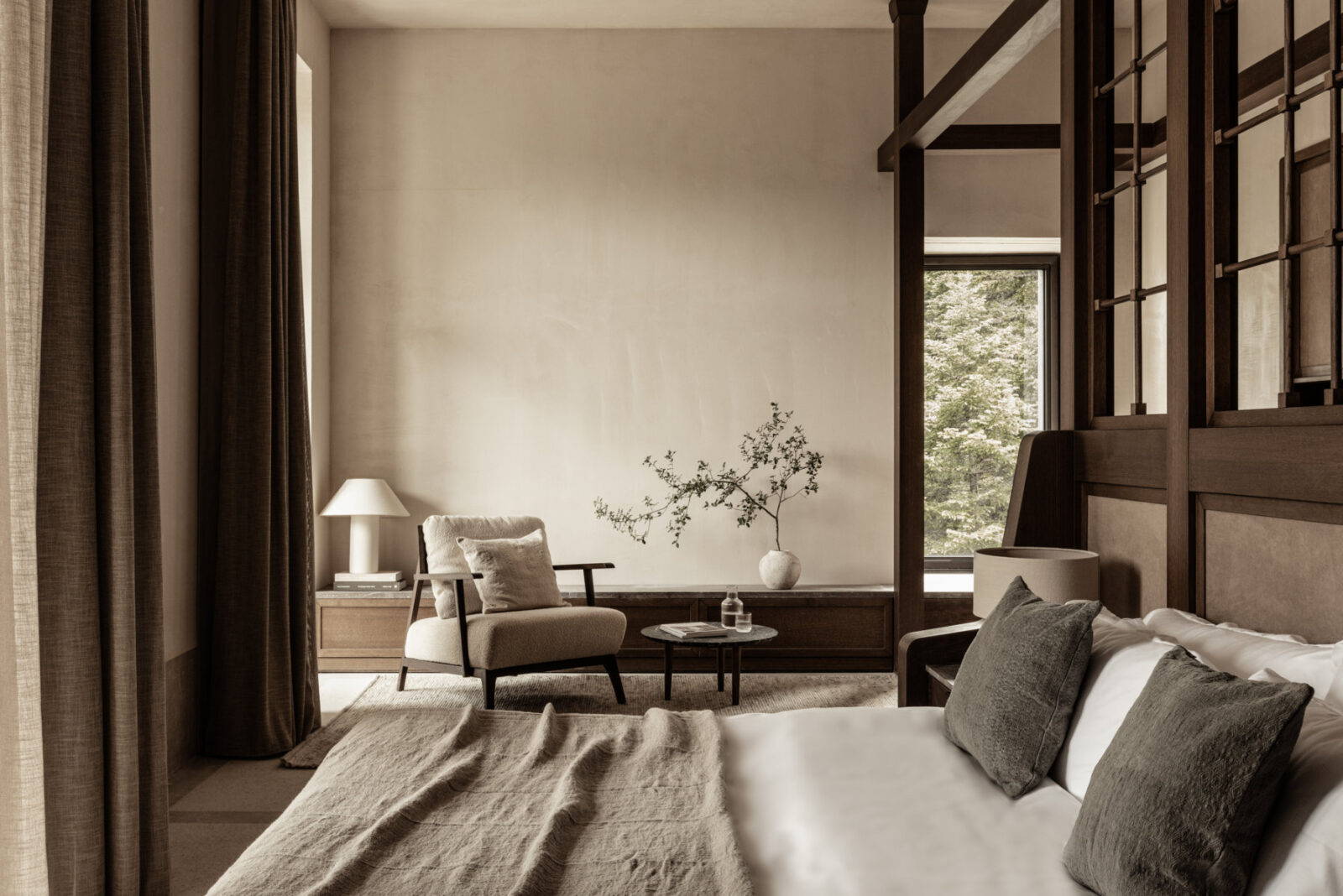
Facts & Credits
Project title: Manna
Project type: Hospitality design
Project location: Arcadia, Peloponnese, Greece
Architectural concept: K-Studio
Technical design: Monogon in collaboration with CS Architecture
On-site supervision: Monogon & K-Studio
K-Studio design team: Giorgos Mitrogiorgis, Fay Mylona, Marina Leventaki, Vasilis Eleftheriadis, Argyris Mavronikolas, Glykeria Gkougkoudi, Ilias Pitsios, Antonis Tzortzis, Natassa Kallou, Natali Markantonatou
Monogon design team: Ioli Zavitsanou in collaboration with Christina Stamouli
Featured artists: Nikos Kanoglou, Joanna Burtenshaw, Diane Alexandre
3D visualization: BigRoom Architects
Branding design: MNP
Surveyor: Ioannis Charbilas
Structural engineer: Niki Psilla
Mechanical engineer: Gerasimos Vasilatos – Alexandra Zachopoulou & Partners
Lighting design: Eleftheria Deko and Associates Lighting Design
Sound consultant: Alpha Acoustiki Ltd
Landscape architecture: H. Pangalou & Associates
Text: Provided by the authors
Photography: Ana Santl
READ ALSO: Un-natural Mat(t)erial – Unnatural Natural Material and Matter | Έκθεση στο Κέντρο Αρχιτεκτονικής Μεσογείου (CAM) στα Χανιά
